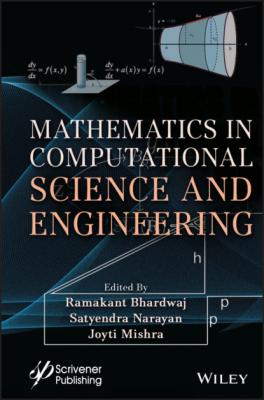Mathematics in Computational Science and Engineering. Группа авторов
Чтение книги онлайн.
Читать онлайн книгу Mathematics in Computational Science and Engineering - Группа авторов страница 14
 to s, a request is situated to bring the Stock of Inventory items up to S.
to s, a request is situated to bring the Stock of Inventory items up to S.
Thus, value of S= Q* and the price of s is determined by the relationship
(1.10)
As I the fundamental Inventory prior to starting the period, at that point to decide the request size to bring the available Inventory of articles as much as Q*, the ensuing three occasions might be examined.
Case 1: If we start the length with I unit of Inventory and do not now buy or produce more prominent, at that point TEC (I) is the foreseen cost. In any case, on the off chance that we expect to purchase extra (Q-I) units in the event that you need to convey Inventory stage as much as Q*, at that point TEC’ (Q*) will include the set-up expense furthermore. Subsequently, for all I<s, the condition for requesting is
(1.11)
That is, while Inventory stage arrives at S=Q*, request for Q-I units of Inventory might be put.
Case 2: For this situation, if I<Q, the request size is controlled by the condition
(1.12)
This implies that no ordering substantially less costly than ordering. Thus Q*=I.
Case 3: If Q>I, at that point foreseen cost for a request up to Q could be extra than generally speaking foreseen cost if no structure is found, that is
(1.13)
Consequently, it is better not to put request for acquirement of things and afterward Q*=I.
1.2.3.4 Numerical Examples
In framework to exhibit the proposed model, a Numerical model is settled with the accompanying Parameters value I=10, CH=0.53, Cs=Rs 5, C=2.5 and K=25. At that point get ideal arrangements are Q*= 45, TEC1 (I)=202.79, TEC1 (Q)=168.5, TEC (Q*) =193.5. Figured outcomes are demonstrated in Table 1.2.
Table 1.2 Optimal instantaneous demand solution of the order policy.
| Parameters | Q* | TEC1 (I) | TEC1 (Q) | (TEC (Q *) |
|---|---|---|---|---|
| I=10,CH = 0.53 CS = Rs 5,C = 2.5andK1 = 25 | 45 | 202.79 | 168.5 | 193.5 |
| I=10,CH = 0.54 CS = Rs 7,C = 3.5andK2 = 26.5 | 46 | 283.77 | 233.77 | 260.27 |
| I=10,CH = 0.51 CS = Rs8.5,C = 4.5andK3 = 27.5 | 44 | 344.51 | 291.22 | 318.72 |
| I=10,CH = 0.52 CS = Rs 9.5,C = 5.5andK4 = 28.5 | 40 | 385.01 | 340.16 | 368.66 |
| I=10,CH = 0.52 CS = Rs 10.5,C = 6.5andK5 = 29.5 | 36 | 425.51 | 387.41 | 416.91 |
1.2.3.5 Sensitivity Analysis
Sensitivity analysis is performed in this section with respect to crucial parameter. We change the value parameter by Q*, TEC1 (I), TEC1 (Q), TEC (Q*) individually keeping different boundaries at their unique qualities and noticed its impact on ideal approach. This demonstrates that as the Ordered quantity increases (Q*), Expected cost Increases TEC(I), Optimum Stock achieve local minimum TEC(Q) decreases, Condition for Ordering TEC (Q*) is increments. Thus, the Sensitivity of the ideal outcome to little change in the Parameter esteem is inspected. Legitimate Inventory limit the Ordering cost of the multiplying. Proposed model be thing by taking various suppositions cost of Inventory value Parameters. The outcomes are presented in Table 1.2. Table 1.2 is displayed in Figure 1.2.
Figure 1.2 Graphical representation of Inventory Instantaneous demand in Brownian movement.
1.2.4 Classic EOQ Method in Inventory
EOQ model intent to resolve ideal number of units to arrange, so that administration can minimize the total cost associated with the purchase expense, transportation price and storage of a product. In other words, the classic EOQ is the amount of inventory to be requested per time for limiting yearly stock cost. EOQ which is profoundly act as a gadget for Inventory Control.
1.2.4.1 Assumptions
The proposed model is established by the following presumptions.
The Demand cost for the years is known and resupplied momentarily.
Ordering cost straight forwardly.
Inventory when an order shows up.
The management ordering cost per unit time in dollars.
Cost of ordering is stable.
Lead time for the Inventory cycle.
The Lead time, that is the time between the putting of the request and the receiving of the order is known.
There is no restraint on order size.
An order is a request for something to be provided.
Ordering